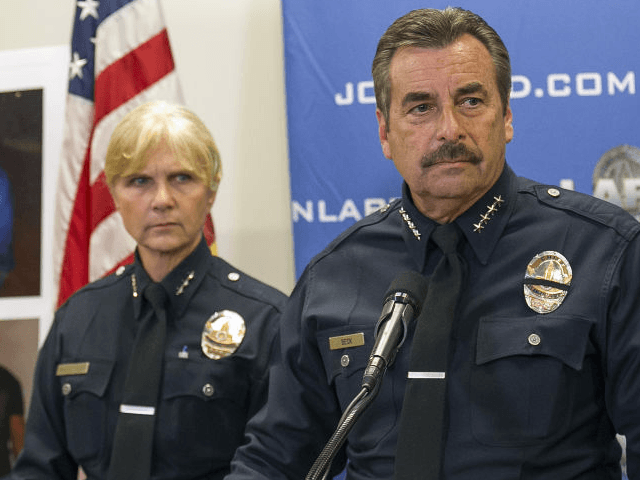Despite assertions that the more diverse Los Angeles Police Department has been more effective in improving community relations, there is evidence that distrust of the police in the general community still has a racial tinge.
A Harvard study conducted in 2009 found that although 83% of residents felt the LAPD was doing a good or excellent job, 23% of black participants still felt that police “almost never” treated them fairly, as opposed to 14% of Latinos and 10% of whites.
That statistic flies in the face of the racial composition of the force: 45% of the LAPD is Latino, roughly 33% are white, and blacks represent 9.6%, roughly equivalent with the 11% of the Los Angeles population that is black.
John Mack, a civil rights leader and former police commissioner, told the Los Angeles Times, “The department has moved away from being an occupying force in South L.A. and East L.A. to one that interacts and is more representative of those communities,” but also admitted that distrust among the community still exists.
Last summer, Ezell Ford, a mentally ill black man, was shot to death by police; in march of 2015, a mentally homeless man on Skid Row was also shot to death.
LAPD command staff had to attend a full day of “implicit bias training” in order to counter their supposed inherent biases.
Yet the more diverse, more sensitive LAPD still is criticized for allegedly targeting blacks unfairly, according to the Times: “ … officers continue to use force on blacks out of proportion to their numbers in the city. Blacks represent 9% of the city’s population but account for 19% of police shootings and 31% of less serious use-of-force cases. About half the complaints filed with the LAPD alleging biased policing involve interactions with black men, records show.”
LAPD Chief Charlie Beck agreed with the Times that race was a factor, but also attributed the disparate numbers to poverty, education levels, employment and neighborhood crime rates.
Only last week, the New York Times quoted a Department of Justice report studying the use of force by the Philadelphia Police Department which showed that the perception of an increased racial bias from white police officers may be a myth. The report discussed “threat perception failures,” explained as “when the officer(s) perceives a suspect as being armed due to the misidentification of a nonthreatening object (e.g., a cell phone) or movement (e.g., tugging at the waistband).”
The report admitted, “In fact, when looking at shootings by officer and race, white officers’ threat perception failure rate for black suspects was 6.8 percent, while for black officers it was 11.4 percent.” The rate of black police’s “threat perception failures” was nearly double that of white police officers.
The history of the LAPD’s move toward increased diversity started with the Watts riots in the 1960s. After the riots catalyzed by the 1991 beating of Rodney G. King, future U.S. Secretary of State Warren Christopher led an investigative panel that urged amending the LAPD’s disciplinary system, and triggered the resignation of the LAPD chief Daryl Gates.
Lawsuits and threats of lawsuits prompted the department to alter numerous procedures involving community relations, which have in fact improved in several areas of the city.

COMMENTS
Please let us know if you're having issues with commenting.